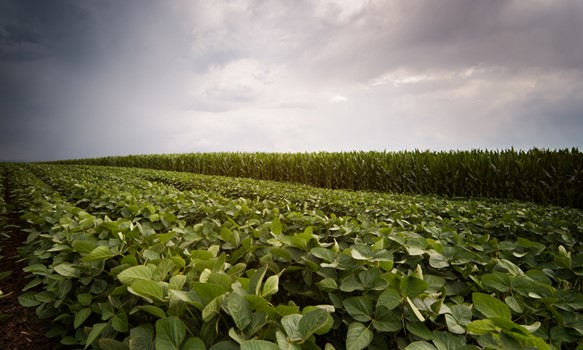Sustainable farming practices sound great in theory. Every farmer wants healthy soil and clean water along with bountiful crops. Cover crops are touted for reducing run-off and erosion, while saving corn and soybean farmers 49% and 41%, respectively, on fertilizer costs. No-till planting improves water-holding capacity in the soil, reduces erosion and improves organic matter in the soil.
Though these provide (eventual) economic benefits to farmers, replacing conventional methods with regenerative makes for complex transitions. These require an investment of time and money. Because every operation is different, farmers often have to work through a discovery process to find which crops and methods work best, while keeping their profits in the black.
Learn more by reading MN Millennial Farmer: Tillage Practices and Soil Health.
Are food companies part of the sustainable solution?
If you’re searching for a way to make sustainable farming work, some producers have found their end customer holds the answer: food companies, and by extension, the people who buy their products. Many mainstream food brands in the U.S. have launched sustainability pledges, covering everything from sourcing of raw materials to packaging. Part of this push is to partner directly with farmers to deploy sustainable farming practices.
This is presented as a win-win-win for farmers, food companies and consumers. But what’s in it for farmers?
Why is there a push for sustainability?
The idea is to counteract the effects of climate change, which is a growing concern among consumers, as well as large companies (and their shareholders). Advocates also point out that the effects of climate change will affect farmers and their ability to survive:
- Loss of soil quality costs corn producers up to a half billion dollars a year, mainly in fertilizer costs, according to a recent University of Colorado study. The environmental implication here is that fertilizer production drives much of agriculture’s greenhouse gas emissions. Agriculture practices contribute to 10% of greenhouse gas emissions in the U.S., according to an estimate from the Environmental Protection Agency.
- Climate change is linked to the disruption of precipitation patterns throughout the U.S. Historic flooding in 2019 destroyed 20 million acres of crops in the Midwest. Elsewhere, deepening drought is also taking its toll on crop yields.
The corporate nudge to sustainable ag
One way food companies are showing their commitment to sustainability is investing directly in regenerative farming practices. These partnerships, as well as offering farmers resources and incentives, are helping farmers launch new regenerative agriculture practices — including the planting of cover crops and direct tilling. A couple of key major initiatives:
- Cargill announced a 10-year plan to expand regenerative farming practices to 10 million acres by 2030.
- General Mills is taking a similar approach with a goal of bringing regenerative farming practices to 1 million acres by 2030.
If such programs interest you, it’s worth keeping an eye out for future opportunities. After all, if these programs are resonating with consumers, others may follow suit.
Farmers getting paid for carbon credits
Another way food companies are working to offset greenhouse gases (and brag to their customers about it) is partnering with growers and farmers in carbon trading.
How does carbon trading work?
The farmer earns carbon credits through sustainable practices, and then sells these credits to companies that are looking to offset their carbon footprint. This can be particularly attractive if you’re getting started on practices like cover crops and no-till farming: You might need that extra income to bridge the gap while you perfect your practice to improve yields and reduce inputs.
Who’s in the carbon trading game?
- Online platforms, such as Indiego Carbon, provide growers a way to enter the carbon trade market.
- Private companies, such as Germany-based Bayer, are launching their own carbon trade system. A consortium of companies including Cargill, McDonald’s and General Mills plan to launch a platform in 2022 called the Ecosystem Services Market Consortium.
- The USDA is eyeing the creation of a carbon bank to incentivize producers to ramp up their sustainable practices. The proposal calls for spending $30 billion from the USDA’s Commodity Credit Corporation.
What to know before you sign on to carbon trading
If you’re at a stage when you’re ready to look at carbon trading, do your homework before you sign any contract to trade carbon credits for cash. The important thing to know is whether that payment is tied to your farming practices or the amount of carbon you’re keeping out of the atmosphere. This item published in AgWeek features a helpful list of questions farmers should ask before signing on.
Expertise you can trust
Exploring your options to phase into cover crops and other sustainable practices? At Minnwest Bank our ag bankers are based in your community. With their help and expertise, you can plow ahead with your plan with confidence. Make an appointment with one of our ag bankers today.


